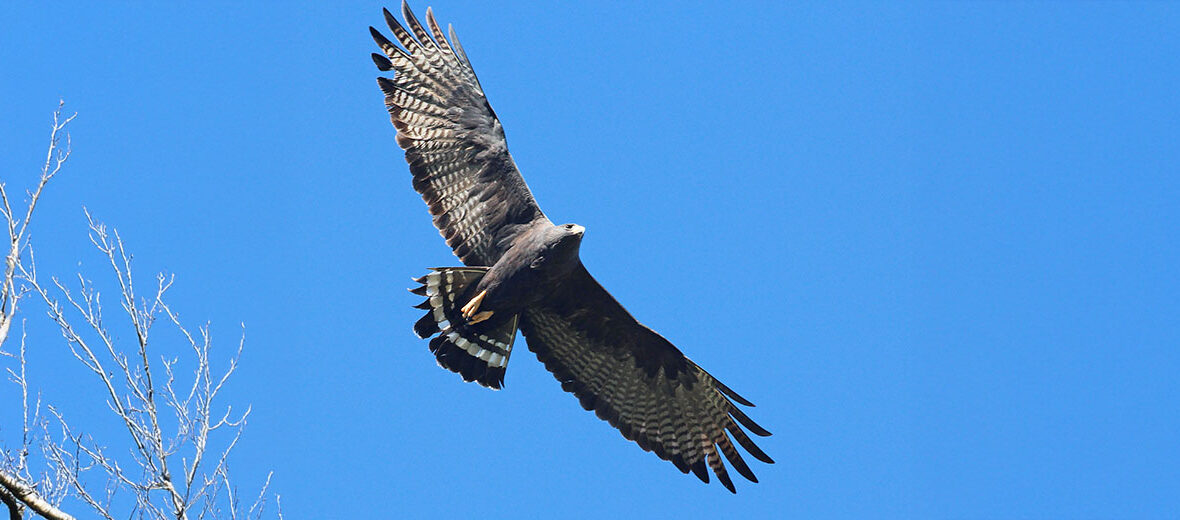
The zone-tailed hawk is a medium-sized species of hawk that hails from southwestern United States, Mexico, Central America, and South America. They prefer warmer, drier climates. With no major threats, sans habitat loss and destruction at the hands of residential and commercial developments, and a stable population of approximately 2,000,000, these hawks are listed as Least Concern by the IUCN.
First the Stats…
Scientific name: Buteo albonotatus
Weight: Up to 2.38 lbs.
Length: Up to 22 inches
Wingspan: Up to 55 inches
Lifespan: Up to 4+ years
Now on to the Facts!
1.) While initially discovered by the English zoologist George Robert Gray, in his List of the Specimens of Birds in the Collection of the British Museum, in 1844, credit has gone instead to the German naturalist Johann Jakob Kaup as the authority in 1847.
2.) The specific epithet albonotatus joins the Latin albus meaning “white” with notatus meaning “marked”.
3.) Their flight feathers closely resemble those of the turkey vulture. As such, these hawks are often confused for these vultures.
4.) Some ornithologists feel that the mimicry of these hawks in looking like turkey vultures tricks potential prey animals into not being alarmed when a zone-tail flies overhead.
5.) Bats, rats, mice, squirrels, various lizards, and various birds are all on the menu.
But wait, there’s more on the zone-tailed hawk!
6.) Courtship displays include engaging in aerial loops, dives, and rolls with one another.
7.) Nests are a bulky construction of sticks, lined with green leaves, typically built on the top or the main fork of a tree, up to 98 feet above the ground.
Did you know…?
Commonplace with raptors, the older sibling often kills the younger one(s) or outcompetes them for food; only occasionally do all siblings survive to adulthood.
8.) Females lay up to 3 eggs that hatch in up to 35 days.
9.) Chicks fledge in up to 50 days.
10.) These hawks are diurnal (active during the day).
Now a Short Zone-Tailed Hawk Video!
Be sure to share & comment below! Also, check out the Critter Science YouTube channel. Videos added regularly!

Want to suggest a critter for me to write about? Let me know here.
Some source material acquired from: Wikipedia & IUCN
Photo credit: Alan Schmierer



